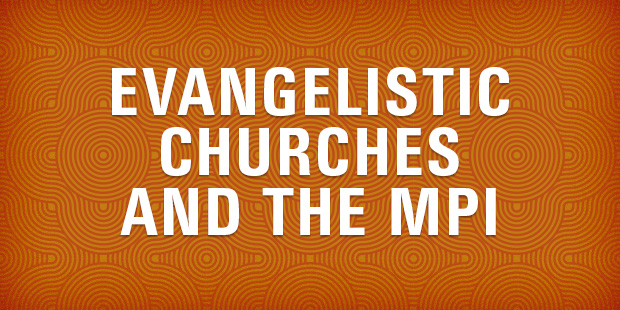
Evangelistic Churches and the MPI
What if you could look at the top five percent most evangelistic churches in America and find the common factors in their ministries? One of my twenty-year quests has been to take on that very challenge. My research, both anecdotal and scientific, has pointed me to several commonalities, but this latest discovery really excited me. Indeed I have found at least anecdotally one of those key factors that distinguishes the evangelistic churches from the others.
Defining the MPI
I call this differentiating factor the MPI: multiple points of intentionality. Here is the definition of MPI: The most evangelistic churches in America have three or more ongoing intentional evangelistic efforts. The key is that the local church does not depend on one, or even two, ongoing evangelistic efforts. Each of the churches I’ve studied has three or more.
Demonstrating the MPI
If my thesis is sound, churches should not depend on a one-and-done evangelistic approach; they should look to multiple points of evangelistic intentionality. Let me give you some examples of those points in the churches I’ve studied:
· Highly evangelistic small groups or Sunday school classes. Not just any small group or Sunday school class, but those that have a DNA to reach people with the gospel.
· Ongoing prayer ministries for the lost. Most of these prayer ministries pray for lost people by name. Most churches pray for physical needs of people, but not spiritual and eternal needs.
· Community ministries with evangelistic intentionality. Again, the key is that these ministries to the community are ongoing and intentionally evangelistic. An example would be the “adoption” of a local public school to meet the needs of the students, teachers, and administrators.
· A highly evangelistic pastor. The pastor is sharing the gospel with someone at least twice a week. The pastor also makes local evangelism a high priority in the church.
· An evangelistic Vacation Bible School. VBS is the single most evangelistic church program in America today. But merely having a VBS does not make it evangelistic. Again, intentionality is key.
· A memorized evangelistic training program. Such programs as Evangelism Explosion and FAITH have been key to moving churches toward a more evangelistic mindset. Those programs fail, however, when it is the sole or primary focus of evangelism in the church.
· Evangelistic service events for the community. Community ministries, noted above, or ongoing. Service events take place on a regular but less frequent basis, such as once a quarter. They do not include Christmas or Easter productions that tend to have minimal evangelistic fruit.
· Relational intentionality. Church members are trained and held accountable for developing relationships with those who are not Christians.
· Ministry evangelism. This category is broad. It includes pregnancy ministries, food and clothes ministries, counseling ministries, and others. With community ministries above, church members go into the community. With ministry evangelism, the community members come to the church to get needs met.
Doing the MPI
Pastors and other church leaders often ask me how their churches can reach more people with the gospel. It would seem from this research that multiple points of intentionality are key.
The MPI tells us at least two key truths. First, one evangelistic ministry does not make your church evangelistic. Sadly, over half the churches in America don’t even have one. Second, churches have different “personalities.” They don’t have to do evangelism like other churches. It’s more important to pick three or more evangelistic approaches that will work best in your congregation.
The list above is not exhaustive, but it does provide good examples. Is your church involved in at least three intentional evangelistic ministries? What are some examples not on the list? What is your church doing to reach more people for Christ?
Read more from Thom here.

Tags: Evangelism, Intentionality, Thom Rainer












